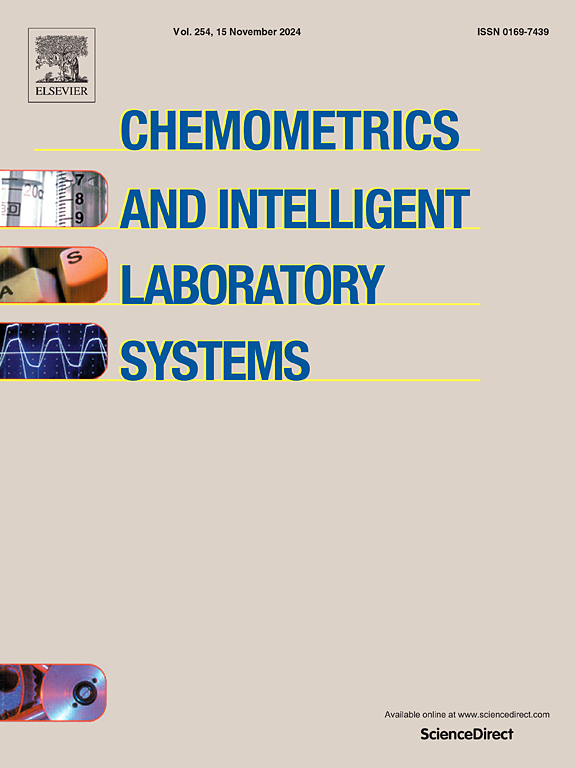A comprehensive tutorial on the SOM-RPM toolbox for MATLAB
IF 3.7
2区 化学
Q2 AUTOMATION & CONTROL SYSTEMS
Chemometrics and Intelligent Laboratory Systems
Pub Date : 2025-03-18
DOI:10.1016/j.chemolab.2025.105383
引用次数: 0
Abstract
We present the SOM-RPM Toolbox for MATLAB, which is an interactive command line implementation of the self-organizing map with relational perspective mapping (SOM-RPM) algorithm. SOM-RPM has shown considerable utility for the interpretation of complex hyperspectral data. In essence, it provides a means for interactively exploring similarities between pixels (based on their spectral information) through the so-called similarity map. This manuscript provides an overview of the theoretical underpinnings of SOM-RPM, followed by a detailed description of the SOM-RPM toolbox structure. We supplement these sections with a demonstrative case study using time-of-flight secondary ion mass spectrometry (ToF-SIMS) imaging data as the subject of the analysis. This case study emphasizes the interactive nature of the toolbox and the method itself, which allow for exploration of the data based on the SOM-RPM model. It also highlights the analytical potential of the approach. Our primary aim is to make the SOM-RPM method more accessible to the broader scientific community. This manuscript provides sufficient content for a non-expert in machine learning to be able to utilize SOM-RPM for exploratory analysis of their hyperspectral data. The toolbox, and associated documentation, is available through the linked data repository.
求助全文
约1分钟内获得全文
求助全文
来源期刊
CiteScore
7.50
自引率
7.70%
发文量
169
审稿时长
3.4 months
期刊介绍:
Chemometrics and Intelligent Laboratory Systems publishes original research papers, short communications, reviews, tutorials and Original Software Publications reporting on development of novel statistical, mathematical, or computer techniques in Chemistry and related disciplines.
Chemometrics is the chemical discipline that uses mathematical and statistical methods to design or select optimal procedures and experiments, and to provide maximum chemical information by analysing chemical data.
The journal deals with the following topics:
1) Development of new statistical, mathematical and chemometrical methods for Chemistry and related fields (Environmental Chemistry, Biochemistry, Toxicology, System Biology, -Omics, etc.)
2) Novel applications of chemometrics to all branches of Chemistry and related fields (typical domains of interest are: process data analysis, experimental design, data mining, signal processing, supervised modelling, decision making, robust statistics, mixture analysis, multivariate calibration etc.) Routine applications of established chemometrical techniques will not be considered.
3) Development of new software that provides novel tools or truly advances the use of chemometrical methods.
4) Well characterized data sets to test performance for the new methods and software.
The journal complies with International Committee of Medical Journal Editors'' Uniform requirements for manuscripts.

 求助内容:
求助内容: 应助结果提醒方式:
应助结果提醒方式:


